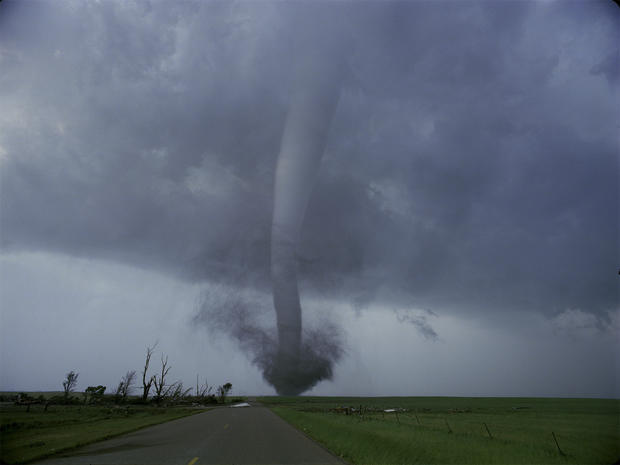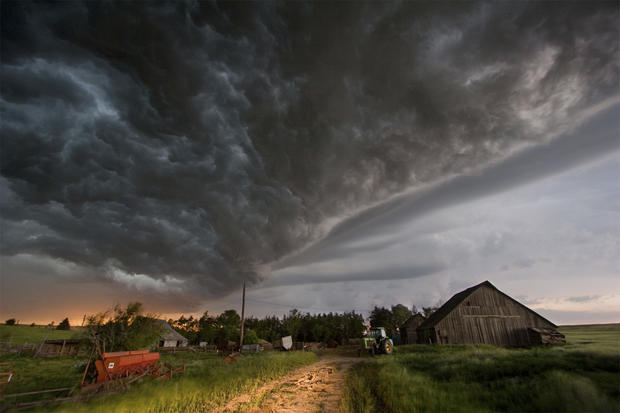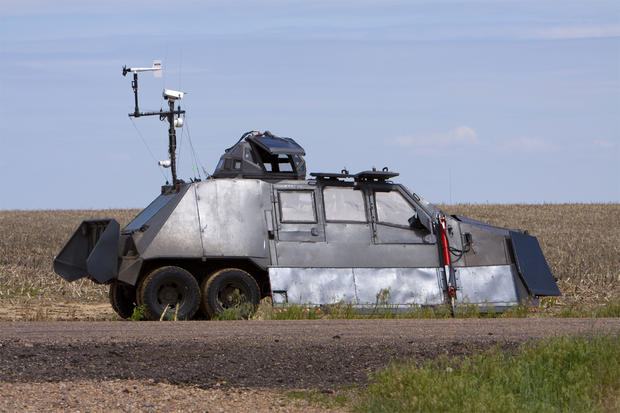Wander Minnesota: Tornado Season
The peak of Minnesota's tornado season may have passed for 2012, but opening this weekend (Sept. 28) at the
Science Museum of Minnesota is Tornado Alley
Tornado Alley is the latest Omnitheater film, and it follows the adventures of Storm Chasers star Sean Casey and his researchers as they do just that: chase storms. But there's a purpose to their madness: to advance their learning about the science behind the origins and evolution of tornadoes.
The film follows the crew as they travel throughout what's known as Tornado Alley: Oklahoma, Kansas, the Texas Panhandle, Nebraska, eastern South Dakota, and eastern Colorado. All together, they traveled 26,000 miles with their camera, their highly sophisticated weather measurement instruments, and the pièce de résistance: the Tornado Intercept Vehicle (TIV), which you may have seen recently at the State Fair.
The TIV was built by Sean Casey to allow him to get up close and personal with a tornado and still survive. As he says, "There's a huge difference between filming a tornado from a couple of miles away with a telephoto lens, and filming a tornado that's on top of you with a wide-angle lens."
It's an impressive piece of machinery, weighing 14,500 pounds, standing 8-feet tall, and 26-feet long. It can travel over 100 mph, has bullet-resistant windows, and has two stabilizing spears that can pierce the group at a depth of 42 inches and take only 23 seconds to fully deploy. Even Batman would be impressed.
The TIV is currently on display at the Science Museum, but on Sept. 29 and Sept. 30, Sean Casey will be at the Museum to talk about both the TIV and Tornado Alley, from noon to 2 p.m. each day.
Why are tornadoes so fascinating? In part, because they're unpredictable in behavior, and because of their extreme yet selective power. Tornadoes have been known to destroy houses, but leave light objects like plates, glasses, lamps, and even paper undisturbed on tables. Yet they can also carry those lighter items, like paper, up to 200 miles. They can even pluck the feathers from a chicken. They're also frighteningly quick: current tornado warnings have a 13-minute average lead time—not a lot of escape time -- and yet they also have a 70 percent false alarm rate, which can lead people to ignore the warnings if they occur often.
Here's a better idea: take a trip to the Science Museum to witness (safely, in the Omnitheater) the sheer power of tornadoes, so even if that next alarm turns out to be false, you'll be better prepared to take it seriously.
What else is happening in our state? Be sure to check out the 10 p.m. Tuesday night WCCO newscasts, where you can learn more in the weekly segment, Finding Minnesota.






